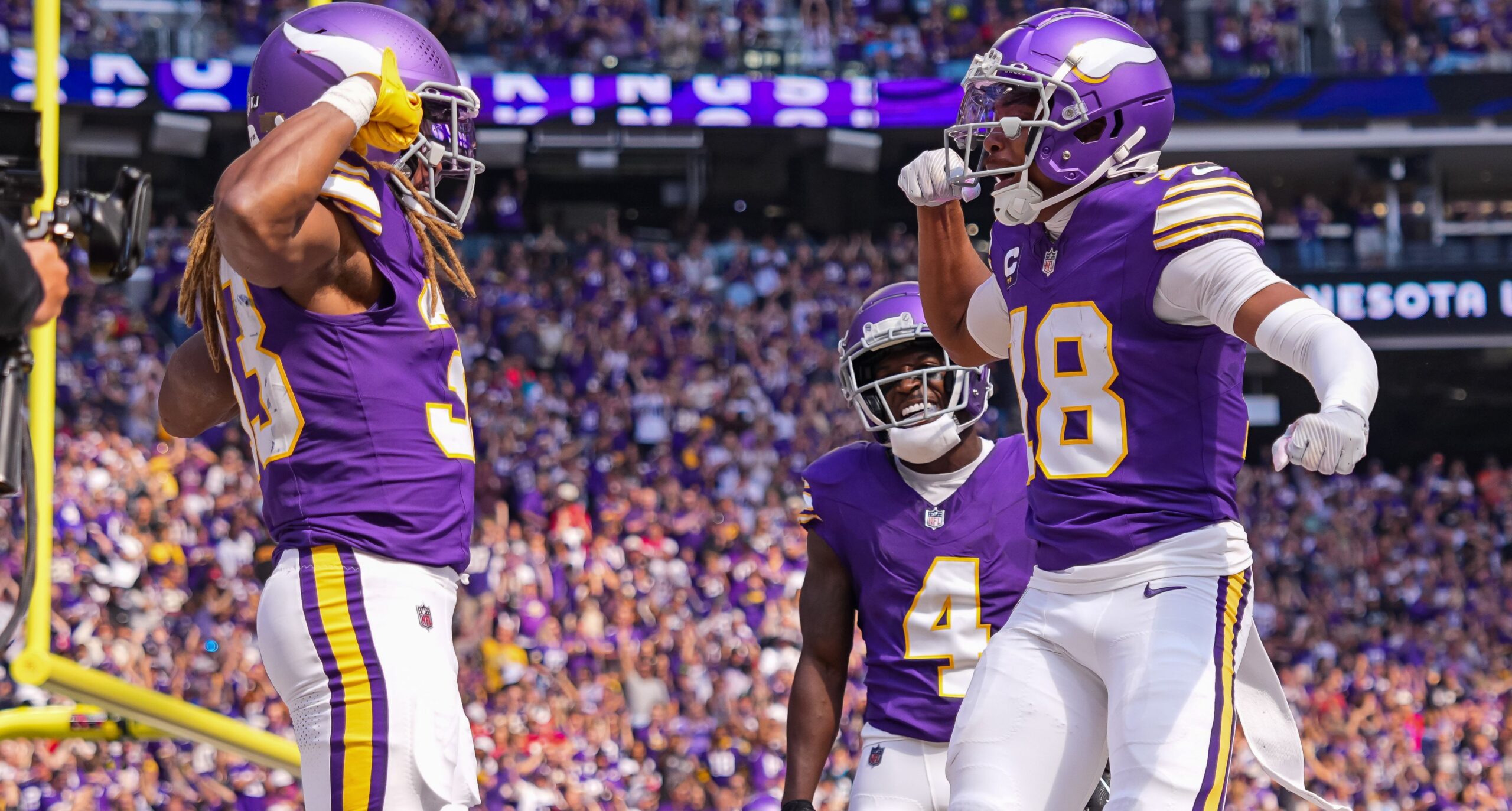As the NFL season approaches, predictions are swirling, and ESPN has thrown a curveball into the Minnesota Vikings’ running back situation. According to their latest forecast, Jordan Mason is poised to potentially overtake Aaron Jones as the lead back, igniting discussions about Jones’ role and the implications for the Vikings’ 2025 season.
This projection raises several questions: Is Mason ready for a larger role? How will this affect the Vikings’ offensive strategy? And what does this mean for Aaron Jones, the veteran presence in the backfield? This article will delve into ESPN’s analysis, examine the strengths of both Mason and Jones, and explore the potential outcomes for the Vikings’ running game.
ESPN’s Bold Prediction: Jordan Mason as RB1
ESPN’s Dan Graziano suggests that Jordan Mason could surpass Aaron Jones on the depth chart. This is a significant statement, considering Jones’ experience and production. Graziano notes, ‘Don’t be surprised if … Jordan Mason leads the team in rushing.’ This bold take immediately raises eyebrows and invites scrutiny.
However, ESPN’s prediction isn’t without merit. Mason, acquired in a trade with the San Francisco 49ers, has impressed the Vikings’ coaching staff with his explosive running style and potential to contribute significantly to the team’s ground game. The Vikings see an explosive element to their running game that Mason adds.
The Case for Jordan Mason: Youth and Potential
Jordan Mason offers the Vikings a blend of youth and untapped potential. At 26, he’s entering what is often considered a running back’s prime. His 2024 season with the 49ers showcased his abilities, as he rushed for 789 yards on 153 carries, averaging an impressive 5.3 yards per carry. This efficiency has caught the eye of the Vikings’ coaching staff, who believe he can bring an explosive element to their offense.
Furthermore, Mason’s physical running style and ability to break tackles make him a valuable asset in short-yardage situations and late in games when defenses are worn down. He represents the future of the Vikings running game.
Aaron Jones’ Role: Experience and Leadership
Aaron Jones, the veteran running back, brings a wealth of experience and leadership to the Vikings’ locker room. At 31, he’s seen it all in the NFL and provides a steady presence for the team’s offense. Jones is not just a player; he is a leader and mentor.
Jones notched 1,546 yards from scrimmage last season, his first in Minnesota. He is a versatile back, capable of running between the tackles, catching passes out of the backfield, and providing solid pass protection. His experience and versatility make him a valuable asset for the Vikings, particularly in crucial game situations.
Potential Scenarios: A Split Backfield or a Changing of the Guard?
Several scenarios could unfold regarding the Vikings’ running back situation. One possibility is a split backfield, similar to what the Detroit Lions have with Jahmyr Gibbs and David Montgomery. In this scenario, both Jones and Mason would share carries, with each player contributing their unique skills to the offense.
Another scenario involves Mason gradually taking over as the lead back as the season progresses. This could happen due to Jones’ age, potential injuries, or Mason simply outperforming him. In this case, the Vikings would be transitioning to a younger, more explosive running back while still benefiting from Jones’ experience and leadership.
Aaron Jones’ Age and Injury History: Factors to Consider
Aaron Jones’ age and injury history are legitimate concerns for the Vikings. As running backs enter their 30s, their production often declines, and the risk of injury increases. Jones has also had his share of injuries throughout his career, which could limit his availability and effectiveness.
These factors could pave the way for Mason to take on a larger role. If Jones were to miss time due to injury, Mason would have an opportunity to showcase his abilities and potentially seize the lead back position.
The Impact on the Vikings’ Offense
The Vikings’ running back situation will have a significant impact on their offense. A strong running game can take pressure off the quarterback, control the clock, and open up opportunities in the passing game. Whether it’s Jones or Mason leading the charge, the Vikings will need a reliable ground attack to complement their passing game.
The best-case scenario is a responsibility split between Jones and Mason, not unlike what the Detroit Lions employ with Jahmyr Gibbs and David Montgomery. This could lead to a more balanced and unpredictable offense, making it difficult for opposing defenses to game plan against the Vikings.
Conclusion: A Shifting Landscape in the Vikings’ Backfield
ESPN’s projection of Jordan Mason potentially overtaking Aaron Jones as the Vikings’ lead running back has ignited a debate about the team’s running game strategy. While Jones brings experience and leadership, Mason offers youth and explosiveness. The Vikings could opt for a split backfield or gradually transition to Mason as the primary ball carrier. The ultimate outcome will depend on factors such as performance, injuries, and coaching decisions.
Ultimately, the Vikings’ success will hinge on their ability to establish a consistent and productive running game. Whether it’s Jones, Mason, or a combination of both, the Vikings’ ground attack will play a crucial role in their quest for a Super Bowl contention.

Leave a Reply